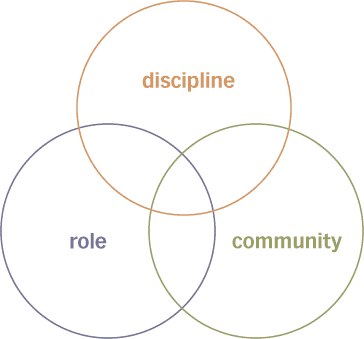At a recent gathering of CIOs, I was introduced, not as an information architect, interaction designer, or librarian, but as a futurist. I figure this affords me the latitude to make a prediction.
Next year, after the bubble bursts, we will enter the era of Information Architecture 3.0. This won’t surprise Tim O’Reilly who slyly positioned the polar bear atop the #1 Google hit for Web 2.0 and commissioned the third edition just in time to clean up the mess.
In fact, this future is self-evident in the undisciplined, unbalanced quest for sexy Ajaxian interaction at the expense of usability, findability, accessibility, and other qualities of the user experience.
Of course, user hostile web sites are only the tip of the iceberg. Beneath the surface lurk multitudes of Web 2.0 startups and Ajaxian mashups that are way behind schedule and horribly over budget. Apparently, nobody told the entrepreneurs about the step change in design and development cost between pages and applications.
But, that’s enough gloom and doom, as the future’s quite bright, especially for information architects who find ways to connect the timeless principles of design and organization with new transmedia models of interaction, co-creation, tagging, and user participation.
Defining Information Architecture
Perhaps we should take a moment, before proceeding, to review the definition of information architecture:
- The structural design of shared information environments.
- The combination of organization, labeling, search, and navigation systems within web sites and intranets.
- The art and science of shaping information products and experiences to support usability and findability.
- An emerging discipline and community of practice focused on bringing principles of design and architecture to the digital landscape.
As these definitions from Polar Bear 3.0 suggest, information architecture extends well beyond taxonomies and the Web.
Still, there are a number of Big IA folks such as Christina Wodtke and Adam Greenfield and Peter Merholz who feel constrained by these definitions. And, while I truly respect their perspectives, I have to agree, as usual, with Jesse James Garrett:
Choosing a narrow definition for the discipline allows us to describe a particular set of problems with precision. And such precision of expression is absolutely required for any discipline to progress.
In his brilliant ia/recon essay, the father of Ajax articulated the distinction between the role and the discipline:
There is a discipline, known as information architecture; and there is a role, known as the information architect. They have developed more or less hand in hand, and up to now any discussion of one has involved discussion of the other. But now that may have to change.
Once again, I agree with Jesse, though I believe it’s vital, especially now, to add a third concept of community.

Figure 1. The Three Circles of Information Architecture 3.0
While the boundaries are naturally fuzzy, core elements of the information architecture community include the IA Summit, Euro IA, the Latin American IA Retreat, Oz-IA, and the IA Institute.
Most who participate in the community’s discussions, conferences, and local events do not self-identify as information architects. In fact, some are not very interested in the central concepts of the discipline. Instead, they see the community as a collection of vibrant, open forums for discussing diverse topics with smart, sensible people.
Information Architects Under Attack
Sadly, both role and community are under attack, and in today’s political economy, where people can select their sources and choose their news, the truth should never misunderestimate the power of invention.
If it were only a few silly Death of IA posts, there’d be no response required. But the current campaign, led by senior practitioners of our sister discipline – interaction design – is worth mention.
Now, as I noted in a blog post, I’ve been digging deeper into interaction design lately, and unfortunately, I keep finding information architecture. I joined IxDA just in time for a celebration of the total absence of information architects from Designing Interactions by Bill Moggridge. I opened About Face 2.0 by Alan Cooper and Robert Reimann, only to find them slamming information architecture in the book’s introduction:
When corporate interest in the Web had reached its peak around 2000, a discipline called information architecture (IA) seemed like it might eventually embody the kind of design discussed here. But, even as the financial prospects of the Web have waned, IA has largely retained its narrow, Web-centric view of organizing and navigating content in pages. With the apparent decline of the new economy, the fortunes of the IA community have similarly diminished.
I find it rather astonishing that these interaction design leaders dedicate such energy (and in their book’s introduction, no less) to denigrating information architecture as a community and discipline.
And, if I were feeling snarky, I might argue this is a manifestation of the semantic envy of designers who would be architects of which Tog wrote or that we’re witnessing a classic case of the younger sister competing for resources and attention. After all, there’s a reason why “information architecture” is five times more valuable than “interaction design” in the eyes of Google AdWords.

Figure 2. Google AdWords Traffic Estimator
But, I’m not feeling the least bit snarky, so instead I’ll suggest that while sibling rivalry is healthy (and fun) within reason, we would do well to remember that we have far more in common than our semantics may suggest. In fact, our clients can’t tell us apart.
The Role: Strategies for Information Architects
I’ve been an interaction designer since 1994. I’ve designed online communities, software products, graphical user interfaces, and Ajax-enabled mapping mashups that leverage tags and taxonomies.
I’ve been an information architect since 1994. I’ve designed online communities, software products, graphical user interfaces, and Ajax-enabled mapping mashups that leverage tags and taxonomies.
Both of those statements are true, though it’s also fair to say that I am mostly known as (and self-identify as) an information architect.
My point is that in the separation of role and discipline, lies an opportunity for information architects to explore well beyond information architecture. Many of us have been asked by clients and colleagues to explore not only the full breadth of structural design – including the creation of architectures of participation – but to serve as a vital bridge between strategy and interface, and to play an active role in new product development. Perhaps it’s time we sought out these Big IA opportunities in a more proactive fashion.
Of course, after the bubble bursts, and we progress from the errors of Web 2.0 into the era of Web 3.0, interaction designers would do well to know some IA.
The Discipline: Information Architecture Strategy
The future looks bright for information architects, and that’s important because the role injects energy into the discipline. While the vast majority of information architecture work is done by folks who are not information architects, the specialists do play a special role in building the community and advancing the discipline.
And, with respect to the discipline, we still have so much to learn and unlearn, even within the “narrow” boundaries of search, navigation, organization, and structure. The niche of search analytics for instance, offers rich opportunities (in practice and research) to better understand user needs and behavior, and inform the efforts of marketing and design.
And, we have so many contexts in which to practice, from the myriad ecologies of the Web to the transmedia environments of ambient findability that beckon from a future not so distant. That’s why I agree with and applaud the Information Architecture Institute’s business plan to extend our practice to include a wider variety of shared information spaces, including:
- Virtual (e.g., software, websites)
- Physical (e.g., museums, libraries, hospitals)
- Procedural (e.g., flows of information in work processes)
Of course, we shouldn’t get carried away by going “beyond the Web” since it will continue to serve as the hub – as both infrastructure and interface – even as we create a world of UFOs and an Internet of objects we can barely imagine.
The Community: Building a Big Tent
In recent years, I’ve had the wonderful opportunity to meet with information architects and interaction designers in Australia, Brazil, Canada, Chile, Denmark, England, France, Germany, Italy, Japan, the Netherlands, Sweden, and the United States at a variety of international and local information architecture events.
I am constantly impressed and inspired by these community members around the world, who are among the most warm, smart, knowledgeable, interesting, and fun people I know. They are the sustainable competitive advantage of the information architecture community, and for the most part, we need to keep doing what we’re doing – creating infrastructure, organizing events, and nurturing a culture that’s vibrant, open, inquisitive, and encouraging.
And, while I do think it’s important that the IA Summit organizers (of which I’m one) work harder to include topics well outside the information architecture discipline (to keep us from getting stuck), the summit annually lives up to its name as a magnificent high point.
And, I have to say that after reading the latest IAI Newsletter, I’m so impressed by how far the community has come in a few short years.
The End of the Beginning
Over the past decade, information architecture has matured as a role, discipline, and community. Inevitably, we’ve traded some of that newborn sparkle for institutional stability and a substantive body of knowledge. It’s for this reason that some of the pioneers feel restless. And, while I applaud their courage and entrepreneurial zeal, as they step beyond the role and the discipline, I hope (for their sake and ours) that they stay connected to the information architecture community.
For those of us who continue to embrace the role and discipline, there’s so much going on already, and the world of Information Architecture 3.0 will only bring more challenges, more opportunities, and more work.
So, that’s my prediction. What do you think?
by Peter Morville